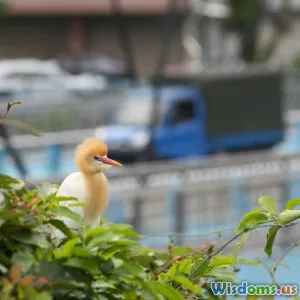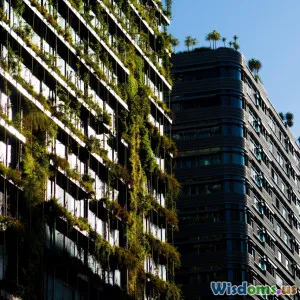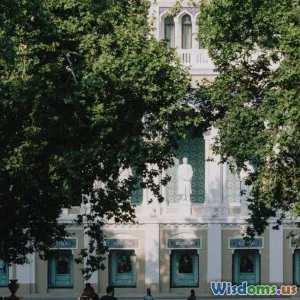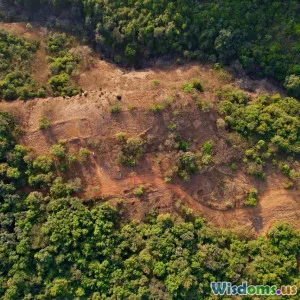
The Impact of Biodiversity on City Living
10 min read Explore how biodiversity transforms urban life, boosting health, resilience, and sustainability in our cities. (0 Reviews)
The Impact of Biodiversity on City Living
Introduction
Imagine stepping outside your urban apartment into a vibrant city park buzzing with bees, shaded by towering trees, and alive with the songs of birds. Far beyond offering a moment of peace, this biodiversity—the variety of plants, animals, and microorganisms within a city—plays a crucial role in shaping the very quality of urban life. As cities continue to expand rapidly across the globe, understanding the impact of biodiversity on city living has never been more critical. Cities are not just concrete jungles; they are complex ecosystems where human health, well-being, and long-term sustainability are deeply intertwined with biodiversity.
What makes biodiversity so important in an urban context? How does it influence our daily experiences, environmental stability, and resilience against climate change? This article unlocks these questions and explores how a richer biodiversity directly benefits city dwellers, policymakers, and global sustainability efforts.
Understanding Urban Biodiversity
What is Urban Biodiversity?
Urban biodiversity refers to the variety of living organisms—from plants, insects, birds, and mammals to fungi and microbes—found in urban environments. Unlike wilderness areas, urban biodiversity uniquely adapts to the challenges of dense human populations, pollution, and fragmented habitats. Green rooftops, community gardens, pocket parks, riversides, and even vacant lots often serve as crucial refuges for species diversity within cities.
The Current State of Urban Biodiversity
Despite the challenges cities face, many urban areas are surprisingly rich in biodiversity. For example, New York City supports over 230 bird species annually and more than 600 species of vascular plants. Similarly, Singapore’s dedication to integrating greenery has led its City in a Garden strategy that supports a wealth of flora and fauna amidst one of the world’s most densely populated cities.
However, urban expansion also threatens habitats and native species, contributing to biodiversity loss globally. Addressing these pressures requires intentional planning and incorporating biodiversity into urban development.
The Multifaceted Benefits of Biodiversity in City Living
Enhancing Public Health and Well-Being
Biodiversity directly contributes to physical and psychological health. Green spaces rich in plant variety provide cleaner air by absorbing pollutants and particulate matter. A 2019 World Health Organization report estimates that urban green spaces can reduce urban air pollution by up to 20%, reducing respiratory and cardiovascular illnesses.
Moreover, access to biodiverse green spaces encourages physical activity and social interaction, factors proven to combat depression and anxiety. Studies from the University of Exeter reveal that exposure to natural environments with rich biodiversity improves mood and attention span better than monotonous landscapes.
Climate Regulation and Resilience
Biodiverse urban green spaces mitigate the urban heat island effect, where concrete and asphalt dramatically increase city temperatures. Trees and vegetation provide shade and release water vapor through transpiration, cooling surrounding air. For example, a single large tree can transpire up to 100 gallons of water daily, significantly reducing local temperatures.
In addition, biodiversity increases resilience to extreme weather events. Diverse plant species improve soil stability, reducing the risk of floods and landslides in urban watersheds. For instance, Detroit’s urban forest initiatives plant native trees that withstand storm surges and stabilize soil, buffering neighborhoods from flooding.
Ecosystem Services and Urban Agriculture
Biodiversity underpins vital ecosystem services that cities rely on, including pollination, water filtration, and waste decomposition. Pollinators like bees and butterflies are essential for urban agriculture, community gardens, and maintaining floral diversity.
London’s urban beekeeping programs highlight this synergy beautifully—bee populations within the city contribute significantly to pollination, ensuring the production of fruits, vegetables, and even supporting urban biodiversity by nourishing native plants.
Economic and Social Value
Beyond ecological benefits, biodiverse cities often see higher property values, tourism appeal, and reduced healthcare costs. A 2018 report by the Natural Capital Coalition reveals that urban green infrastructure can generate economic returns of up to $12 for every $1 invested by reducing energy needs and improving public well-being.
Furthermore, community-based biodiversity projects foster social cohesion and environmental stewardship. Participatory gardening initiatives in cities like Vancouver empower residents, promote cultural diversity, and engage citizens in sustainability practices.
Real-World Examples and Initiatives
Singapore’s Green Blueprint
Singapore stands as a global leader in integrating biodiversity into an intensely urbanized landscape. Through policies like the ‘‘City in a Garden’’ vision and extensive vertical greening, the city has not only boosted its biodiversity but also bolstered its residents’ quality of life. Its Park Connector Network links natural habitats across the city, providing corridors for wildlife and promoting recreation.
New York City’s MillionTreesNYC
Launched in 2007, this initiative aimed to plant one million trees throughout the city to enhance urban biodiversity, air quality, and quality of life. Two key outcomes were reductions in air pollution and urban temperatures, especially in food deserts and lower-income neighborhoods, thereby addressing environmental justice.
Bogotá’s Ciclovía and Verdeo Urban Parks
Bogotá’s open streets programs and creation of urban parks have boosted local biodiversity while increasing access to green spaces, improving air quality and community engagement. This demonstrates how mobility planning and biodiverse spaces can collaboratively enhance city living.
Challenges and Future Directions
Despite successes, there are challenges in fostering urban biodiversity, including competing land use priorities, funding constraints, and ecological fragmentation. Additionally, some invasive species proliferate in urban areas, sometimes threatening native biodiversity.
Emerging technologies like GIS mapping, citizen science platforms, and green infrastructure solutions are helping overcome these obstacles by optimizing habitat restoration and community involvement.
Policy Integration and Equity
To maximize biodiversity’s impact, sustainability strategies must integrate biodiversity goals explicitly in urban planning and ensure equitable access to biodiversity for all city residents, especially marginalized communities often burdened with diminished green spaces.
Community Engagement
Finally, empowering residents through education and participative stewardship remains essential for the sustained success of biodiversity in cities. When people recognize their personal and collective stake in urban ecosystems, cities become healthier, happier places.
Conclusion
Biodiversity is far more than an ecological luxury: it is a cornerstone of sustainable, resilient, and healthy city living. From improving air quality and cooling streets to supporting mental health and creating thriving social spaces, the presence of diverse life forms enriches every aspect of urban life. As urbanization grows inexorably, embedding biodiversity into city design not only conserves nature but also safeguards human well-being.
Embracing biodiversity means envisioning cities as living, breathing organisms—complex mosaics where humanity harmonizes with nature. The future of urban living depends on nurturing this balance by adopting inclusive policies, engaging communities, and investing in green infrastructure. The benefits are clear, tangible, and vital.
Would you want your city to be a vibrant ecosystem that nurtures both people and wildlife? Taking action today to support urban biodiversity is the key to unlocking healthier, more sustainable city communities tomorrow.
References
- World Health Organization. (2019). Urban green spaces and health.
- University of Exeter. (2020). Psychological benefits of biodiversity exposure.
- Natural Capital Coalition. (2018). Business and biodiversity: measuring impact.
- New York City MillionTreesNYC Project Report.
- Singapore National Parks Board. "City in a Garden" Vision Documentation.
Rate the Post
User Reviews
Popular Posts




















